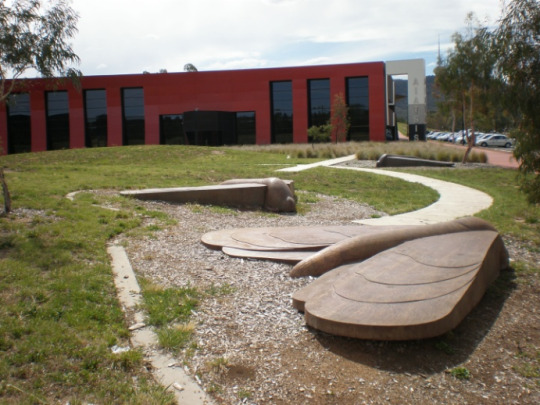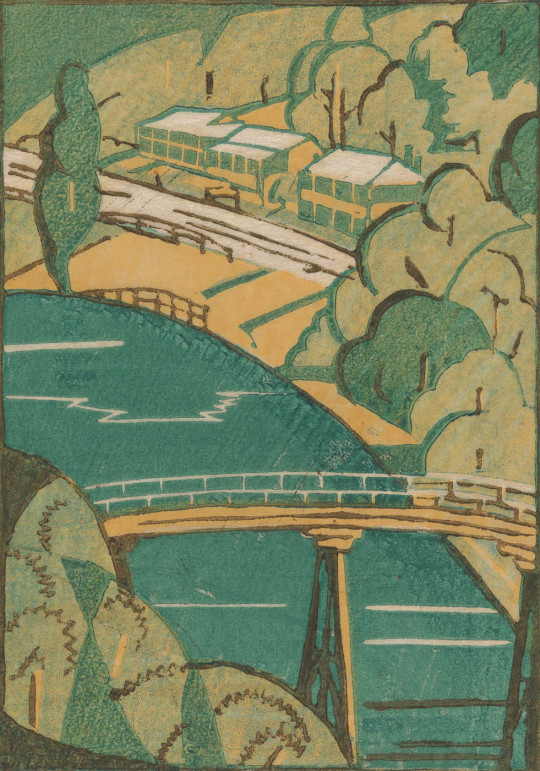#Kamberri/Canberra
Text
Monday's image: May 6, 2024
Frank Stella, Spectralia, Lithograph, etching, aquatint, relief and screenprint, Comp and sheet 67.8 x 81.8 centimeters, Publisher: Kenneth Tyler, 1994, National Gallery of Australia, Kamberri/Canberra
#mc_embed_signup{background:#fff; false;clear:left; font:14px Helvetica,Arial,sans-serif; width: 600px;} /* Add your own Mailchimp form style overrides in your site stylesheet or in this style block. We recommend moving this block and the preceding CSS link to the HEAD of your HTML file. */
Subscribe to Monday's image
* indicates required
Email Address *
(function($) {window.fnames = new Array(); window.ftypes = new Array();fnames[0]='EMAIL';ftypes[0]='email';fnames[1]='FNAME';ftypes[1]='text';fnames[2]='LNAME';ftypes[2]='text';fnames[3]='ADDRESS';ftypes[3]='address';fnames[4]='PHONE';ftypes[4]='phone';}(jQuery));var $mcj = jQuery.noConflict(true);
#whatif#MichaelKohlhaasCurtain#FrankStella#lithography#etching#aquatint#reliefprinting#screenprint#PrinterKennethTyler#NationalGalleryofAustralia#Kamberri/Canberra#NYTimes#forests#foliage#palmtrees#Brazil#landscape#CanMoreForestsBringMoreProfits?#Amazonrainforest#cattlerancheshaveruledAmazonfordecades#newcompaniesselling#abilitytoslashplanet-warmingcarbon#Inmate'sDeath#HighlightsFailuresinMentalHealth#PrisonsStruggleinDualRole#JailerandCaregiverforThousandsofPeople#mentalhealthcrisis#MarkusJohnson#diedinprisonaftermentalcollapse#gravestone
0 notes
Text

Ethel Spowers (Australian, 1890-1947)
The plough
1928
London
Linocut, printed in colour inks, from three blocks
National Gallery of Australia, Kamberri/Canberra
Purchased 1978
190 notes
·
View notes
Text




Julie Dowling (b.1969) is an Indigenous Australian artist whose work, in a social realist style, deals with issues of Aboriginal identity. She identifies culturally and politically as a Badimaya First Nation woman. via Wikipedia
www.instagram.com/dr.juliedowling
www.juliedowling.net | @dr.juliedowling
Julie Dowling, Badimaya people, Self-portrait: in our country 2002, National Gallery of Australia, Kamberri/Canberra, purchased 2002 © Julie Dowling/Copyright Agency, 2022
‘I am situated [in this painting] as a member of this group with time not separating our mutual connection to this Country.’ Julie Dowling, 2002
Source: Artist statement, 2002
Julie Dowling, ‘Self portrait: Black bird’, 2002, synthetic polymer paint, red ochre, glitter and metallic paint on canvas, 120 x 100cm. State Art Collection, Art Gallery of Western Australia, Gift of Brigitte Braun, 2017, © Julie Dowling / Copyright Agency.
Julie Dowling, Badimaya people, Black Madonna: Omega, 2004, synthetic polymer paint, red ochre, glitter and metallic paint on canvas, 120 x 100 cm, Art Gallery of Western Australia collection, Perth, image courtesy the artist and Art Gallery of Western Australia, Perth © Julie Dowling
Julie DOWLING, Mary, 2001
Oil on linen, 150 x 120 cm
© Julie Dowling
My great grandmother’s portrait is shown in a heroic portrait tradition found in Europe and America. This picture is about my history as valid by using those styles honoured by Non-First Nation art critics and historians.
#JulieDowling #palianshow #womensart #artbywomen #artherstory #firstnation #AustralianArtist #indigenouspeople
25 notes
·
View notes
Text

Emily Kam Kngwarray, Anmatyerr people, Ntang Dreaming (1989) National Gallery of Australia, Kamberri/Canberra
(source)
0 notes
Text
Monet masterpiece officially opens in Murwillumbah
One of the world’s most famous artworks by Claude Monet – is now on display at the Tweed Regional Gallery & Margaret Olley Art Centre, as part of the National Gallery of Australia’s Sharing the National Collection initiative.
Most significant work of art ever shown in Tweed, part of Sharing the National Collection initiative
Claude Monet, Meules, milieu du jour [Haystacks, midday]1890, National Gallery of Australia, Kamberri/Canberra, purchased 1979. The renowned painting will be on display at the Tweed Regional Gallery from 1 November 2023 as part of the Sharing the National Collection initiative. (Photo by Luke…

View On WordPress
#art exhibition#art gallery#artworks#destinations#gold coast#Monet#Murwillumbah#northernrivers#NSW#tweed regional gallery#Tweed Shire
0 notes
Photo

A photo from “Sounds of the Gallery”. This was a really special project! Not only did I get to collaborate with my long-time friend and absolute legend Sia Ahmad, but I also had the chance to explore the National Gallery of Australia, Canberra, with a soprano saxophone.
Check out the music here
(Photo featuring Rebecca Horn, Les Amants [The lovers], 1991, National Gallery of Australia, Kamberri/Canberra, purchased 2020 © Rebecca Horn)
0 notes
Text

Grace Lillian Lee, Meriam Mir people, Future Woven Floral Forms (red), 2020, National Gallery of Australia, Kamberri/Canberra, purchased in celebration of the National Gallery of Australia's 40th anniversary, 2022
1 note
·
View note
Text
Lacking the dangerous charisma of other Aussie undesirables, such as red-back spiders, funnel-webs or tiger snakes, these largish, muddy-brown insects were the embodiment of abject otherness, their persistent knocking against uncurtained windows and sneaky incursions into closely guarded domestic interiors summoning inchoate fears and feelings of revulsion. [...] [T]he Great Invasion of 1969, when [...] the nation’s capital fell prey to such a large bogong infestation that the automatic lifts and air-conditioning shafts of some high-rise office buildings were blocked by resting moths, while parts of the city even suffered power failures [...].
Within the public space of the federal capital, the world of the Kamberri is recalled in the guise of sundry bogong sculptures, such as those that grace the grounds of the Australian Institute of Aboriginal and Torres Strait Islander Studies on the Acton Peninsula, once a major corroboree site.


In Australia, Agrotis infusa, as it is known to Western science, typically begins and ends its life-cycle on the slopes and plains west of the Great Dividing Range in northern New South Wales and southern Queensland. Each spring, swarms of adult moths fly south into the Snowy Mountains of southern New South Wales and northern Victoria in search of the cool dark crevices in alpine blockstreams, cavernous piles of granite boulders, where they while away the hot summer months in a process known as ‘aestivation’. There they make themselves collectively cosy during the day by tucking their heads under one another’s wings, covering the rock walls like scales or roof tiles. [...]
The urge to set off on this annual migration appears to be triggered by the drop in barometric pressure that accompanies the formation of summer storms. The moths travel by night, upwards of 1,000 kilometres in some cases, feeding on nectar along the way, and dropping down to ground to shelter during the day. This was always a potentially perilous journey, but it became a whole lot more so during the twentieth century. In addition to the perennial risk of being blown off course and towards the eastern seaboard by westerly storm winds, the growth of towns illuminated ever more brightly by electric lights has proven a not infrequently fatal attraction for migrating moths. It is thought that the lights ‘fool the moths into behaving as if the sun was coming up. Their natural response is to dive down to the ground to find a dark place before the heat of the day sets in. … Buildings can become covered with a thick coating of moths, desperately seeking dark cracks and crevasses to hide from the sun’ (‘Bogong Moths Migrating South’). Those that end up in Sydney, not to mention Melbourne, have gone seriously astray, probably as a result of stormy weather; but Canberra is right in their flight path, and, in addition to the domestic illumination of its sprawling suburbs, the 40,000 lights of the New Parliament House, with its elevated floodlit flagpole beckoning from afar, burn long and strong.


Bogongs that manage to survive the risks posed by storms, predators, poisons and the odd book-wielding student during their southern sojourn, return north to their breeding grounds in the relative cool of the autumn. Now that they are all grown up, they duly mate, whereupon the pregnant females cleverly lay their eggs on the stems of a variety of food plants. Previously native species, these are now all too often agricultural crops, such as cauliflower, silverbeet, lucerne, flax and sundry cereals. Needless to say, this practice has ensured that bogongs are if anything even more hated by farmers than by city slickers such as myself. When the larvae emerge in the guise of hungry caterpillars, creamy-coloured to begin with, then green, and finally grey, black or orange-brown in hue, they each make themselves a snug burrow in the soil at the base of their host plant. There they hide by day, craftily emerging under the cover of darkness to feed. This nightly feasting is bad news for seedlings, the stems of which are often gnawed right through, leading bogongs to be classed as a pestiferous ‘cutworm’ and, for the past fifty to one hundred years, regularly doused in an array of biocidal chemicals.
While the causes of this [bugong moth population] decline remain uncertain, the clear-felling of native vegetation in their breeding grounds and liberal use of biocides on the cropland that has replaced it are likely to be factors (Keaney). The industrial production of preferred settler Australian foodstuffs, and possibly other lucrative plants, in the bogong breeding grounds also appears to be threatening more than the moths themselves.
A paper published in 2001 (Green et al.) found that the raised levels of arsenic found in the outwash areas of those caves where bogongs had been aestivating over summer indicated that the moths were importing poison into the alps. Moreover, arsenic was also found in the faeces of mammals that prey on them, including bats and mountain pygmy possums, an already endangered species. The source of this arsenic could well be from accumulations in the soil, a legacy of its former use in pesticides, as well as in cattle and sheep dips, in lowland agriculture: the story of the bogong discloses connections across time as well as space.
---
Photos, captions, text from: Kate Rigby. “Getting a Taste for the Bugong Moth.” Australian Humanities Review. May 2011.
26 notes
·
View notes
Photo

Ethel Spowers
Melbourne from the river
c. 1924
Melbourne
Woodcut, printed in color ink, from five blocks
National Gallery of Australia, Kamberri/Canberra
Purchased 1976
266 notes
·
View notes
Photo

Eveline Syme
The Yarra at Warrandyte
1931
Melbourne
Linocut, printed in color, from four blocks
National Gallery of Australia, Kamberri/Canberra
Purchased 1977
182 notes
·
View notes
Photo

Ethel Spowers
Balloons
c. 1920
National Gallery of Australia, Kamberri/Canberra
Gift of Chris Montgomery 1993
163 notes
·
View notes
Text

Pantjiti Mary McLean, Ngaatjatjarra people, Palunya: that's all 2002–2004, National Gallery of Australia, Kamberri/Canberra, purchased 2006 © Mary Pantjiti McLean/Copyright Agency, 2022
0 notes
Text

Julie Dowling, Badimaya people, Self-portrait: in our country 2002, National Gallery of Australia, Kamberri/Canberra, purchased 2002 © Julie Dowling/Copyright Agency, 2022
1 note
·
View note
Text

Installation view, Judy Watson & Helen. Johnson: the red thread of history, loose ends. National Gallery of Australia, Kamberri/Canberra, 2022
0 notes